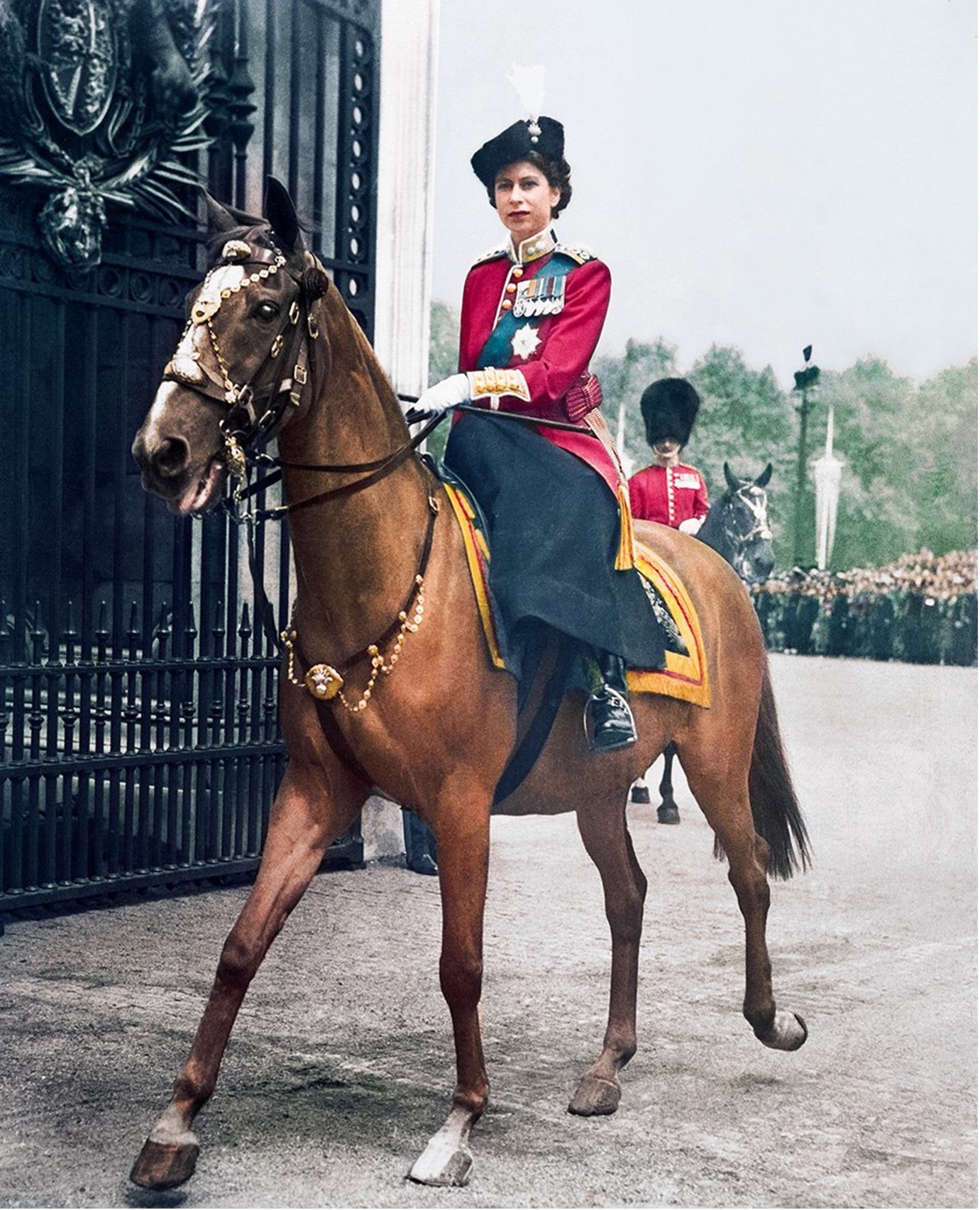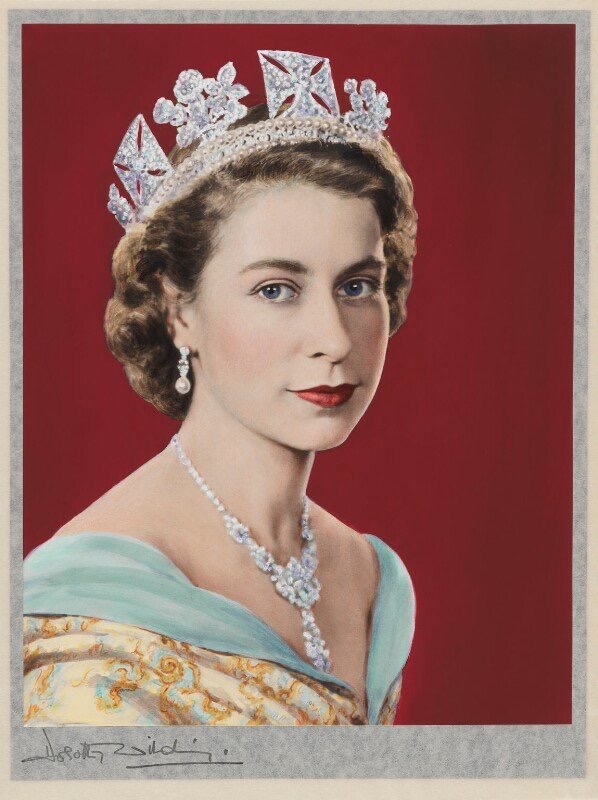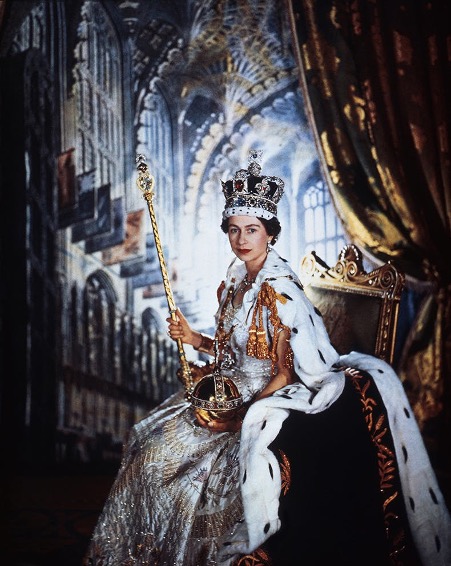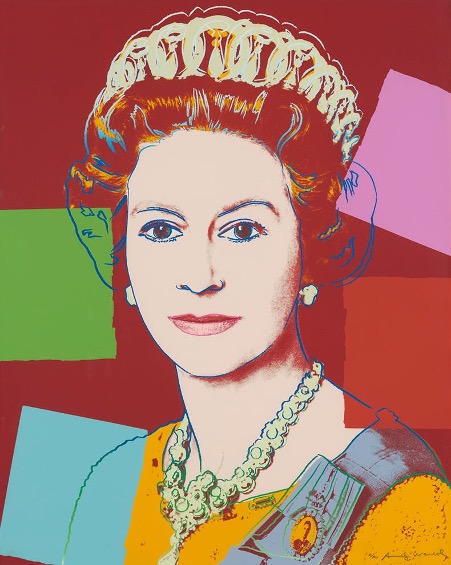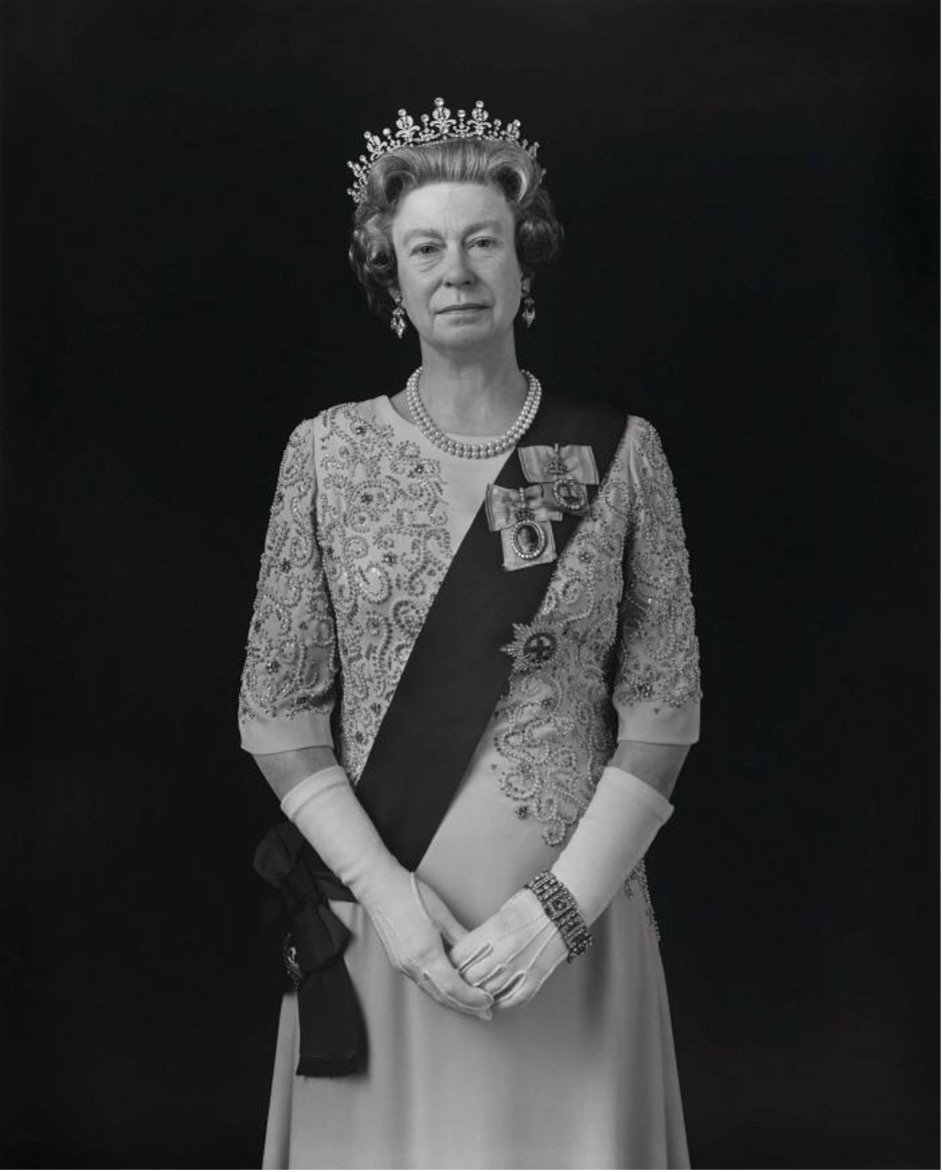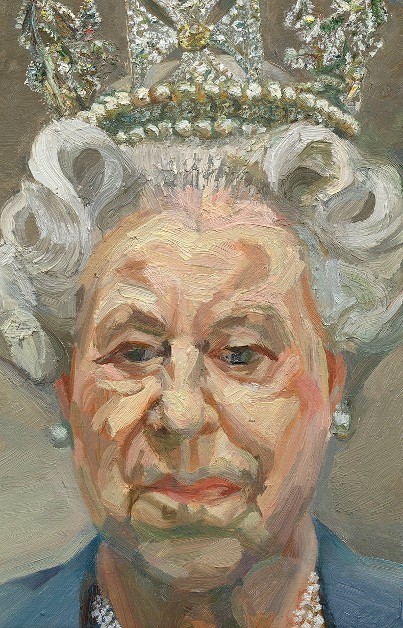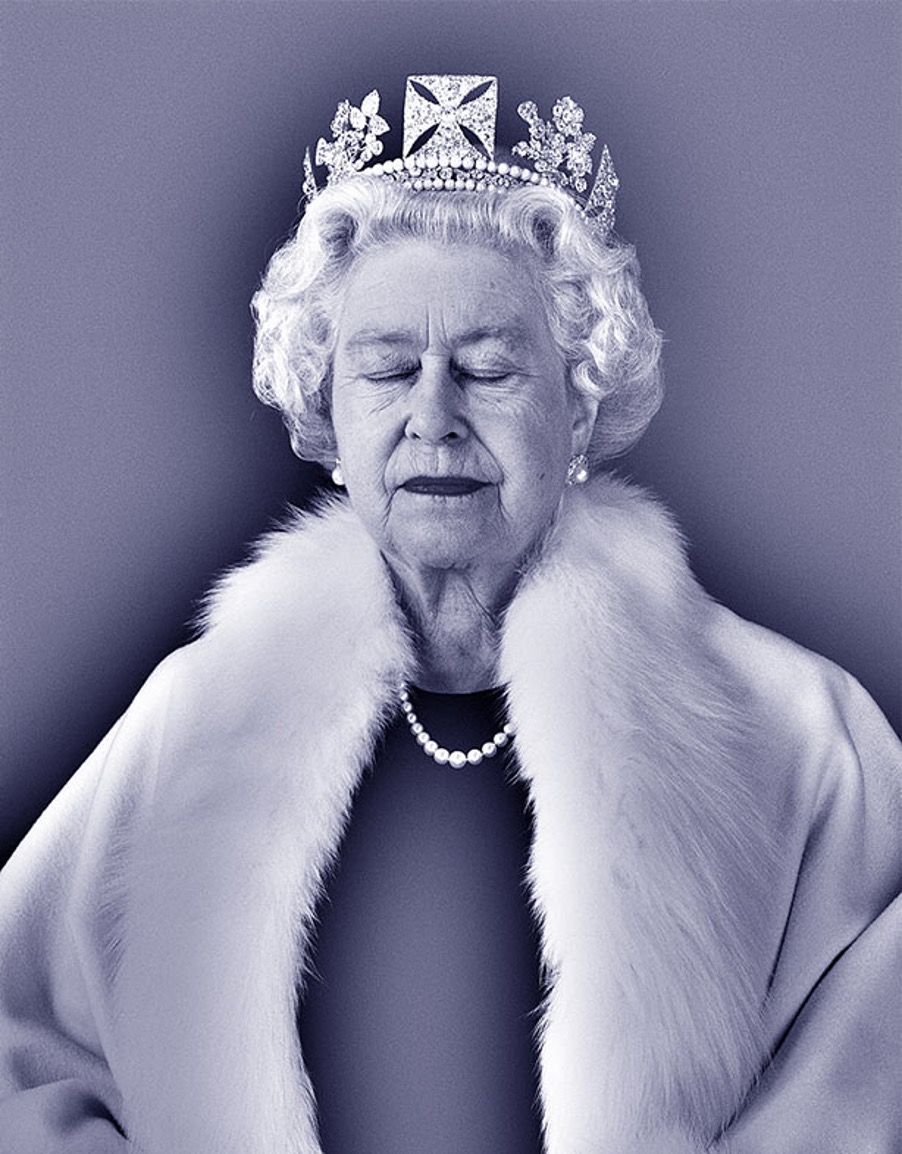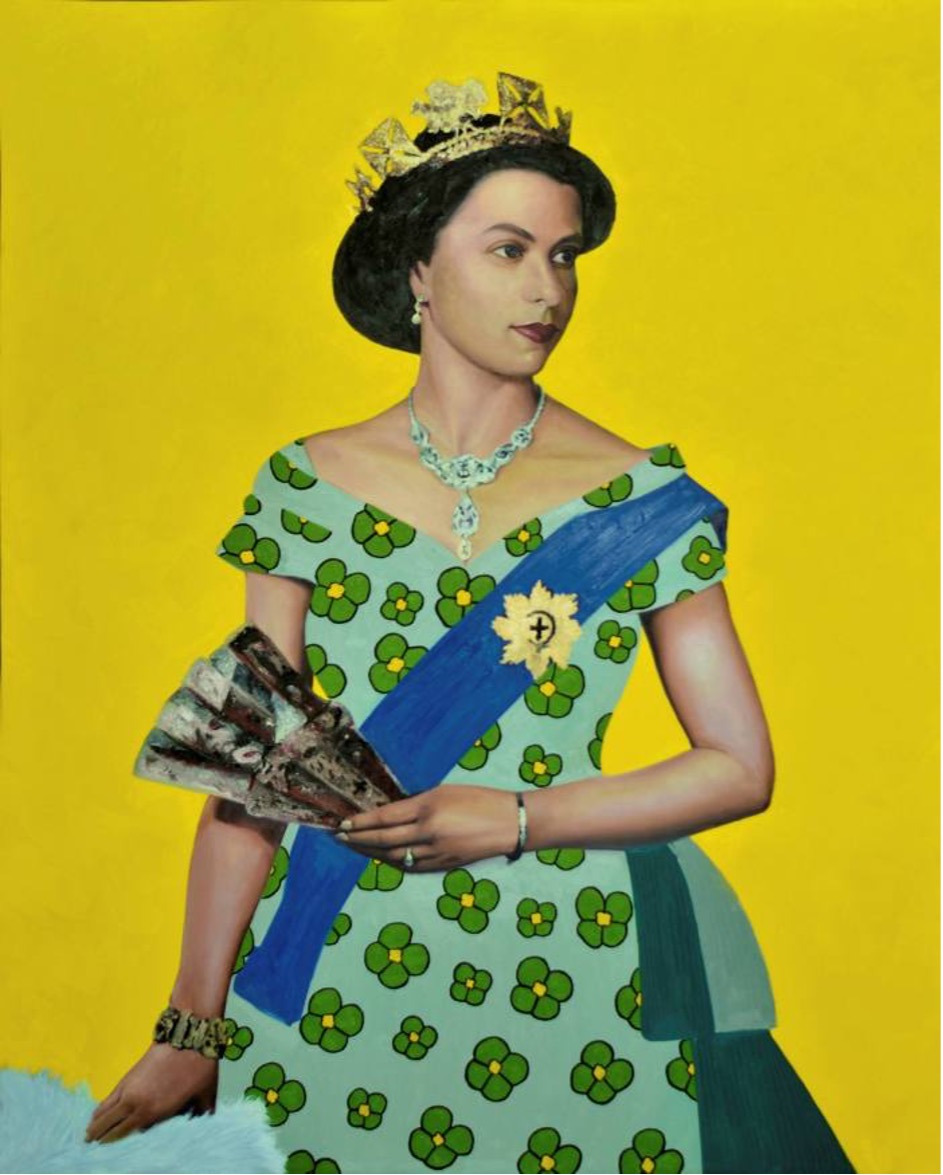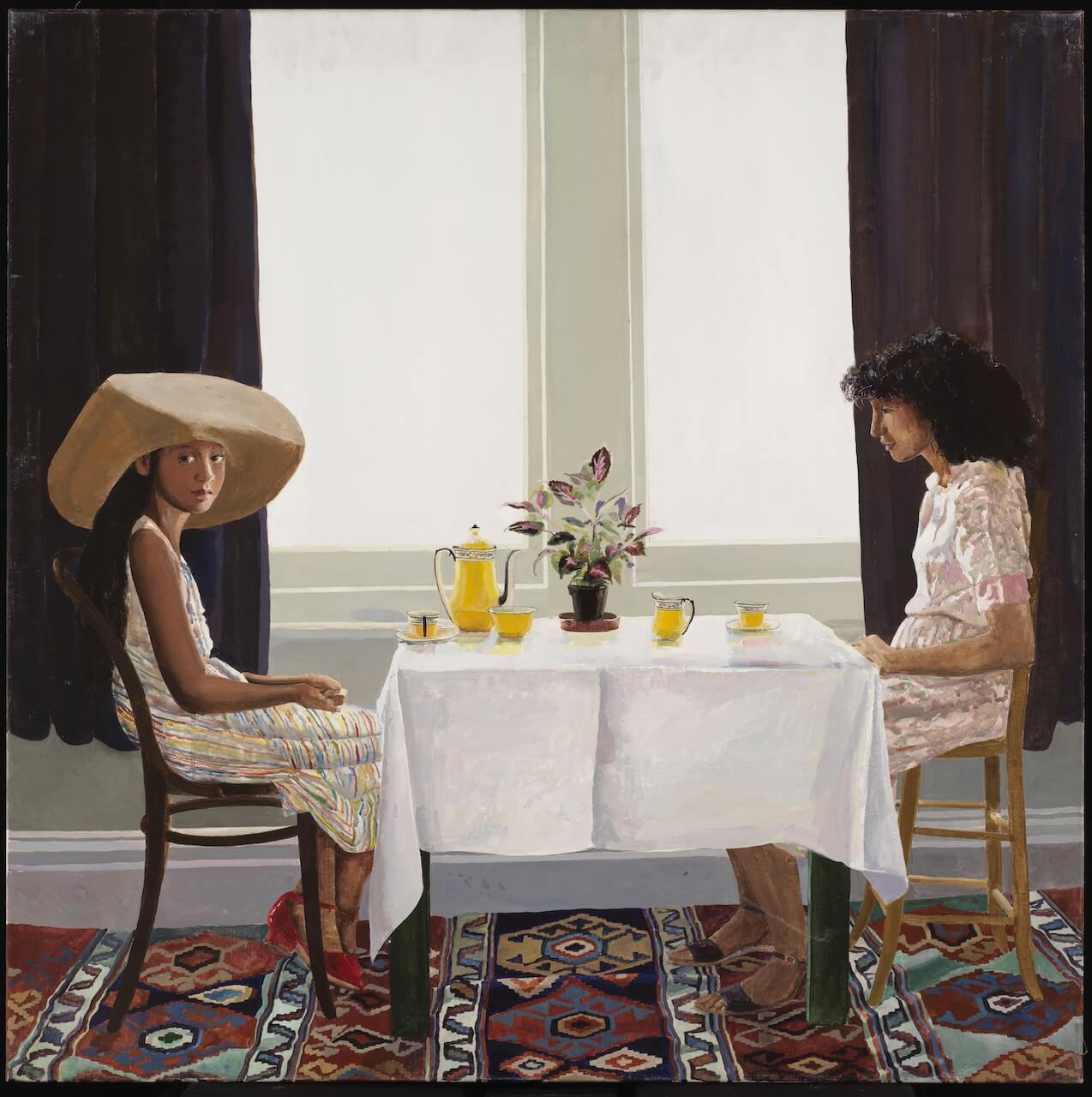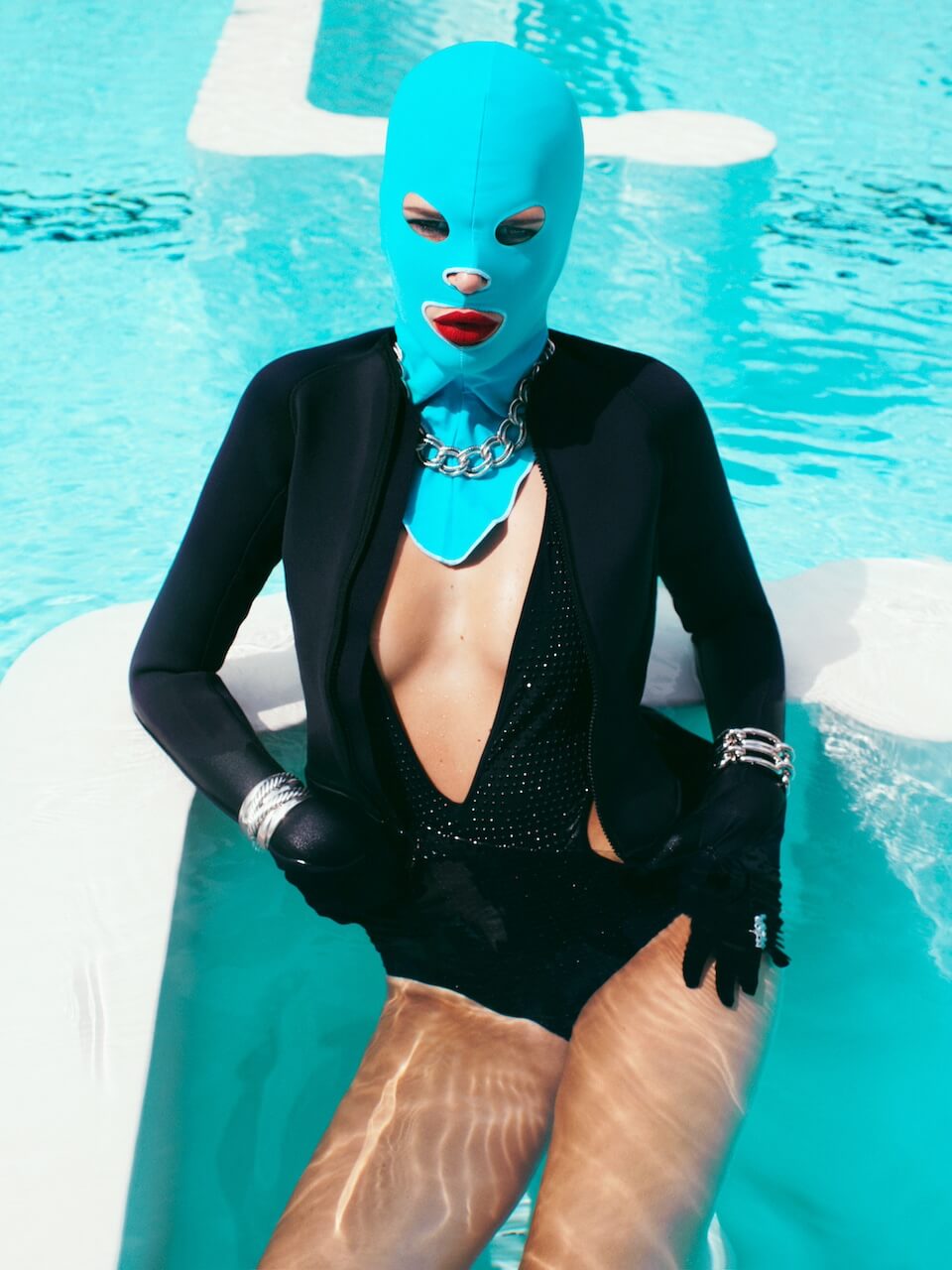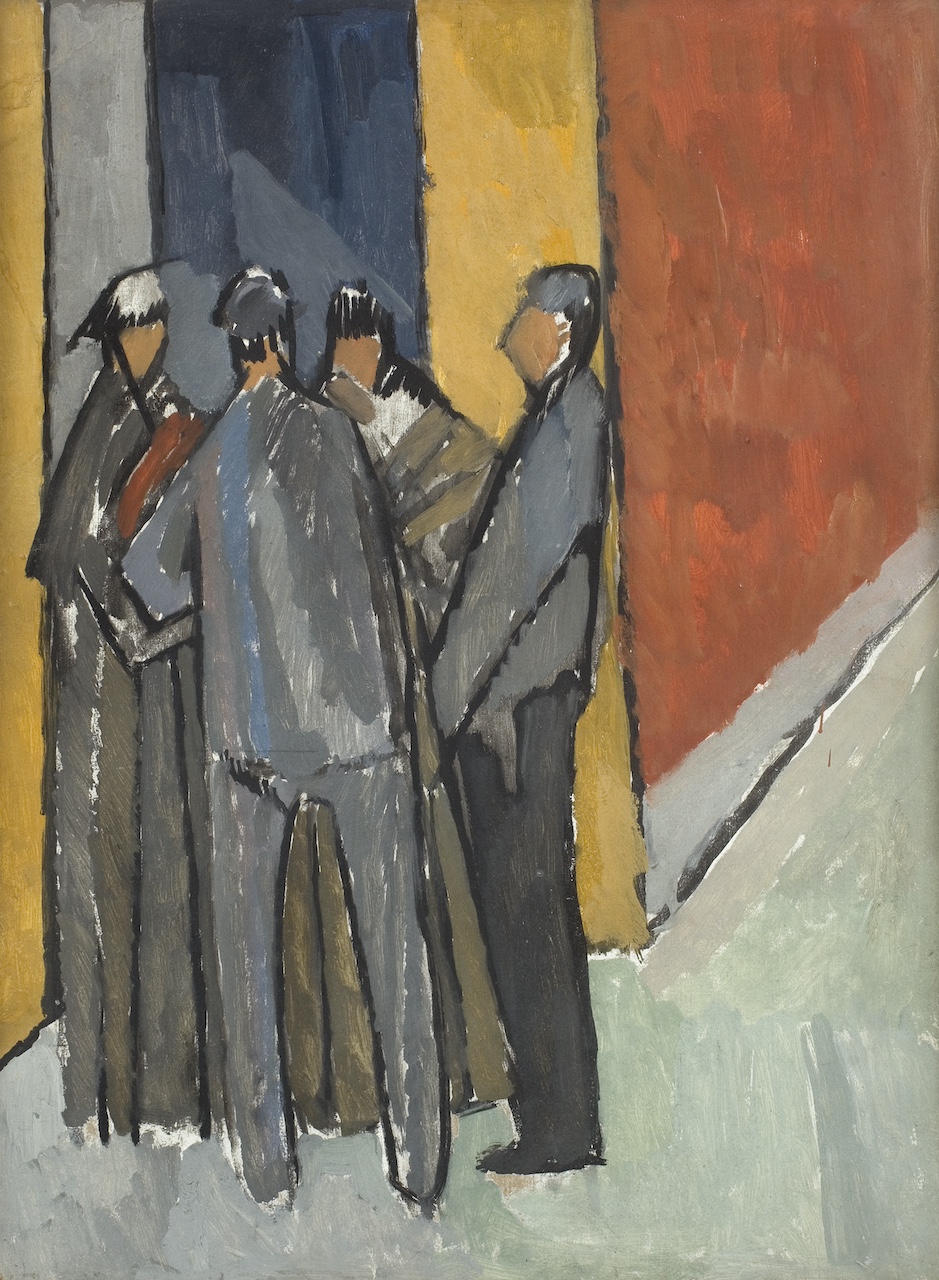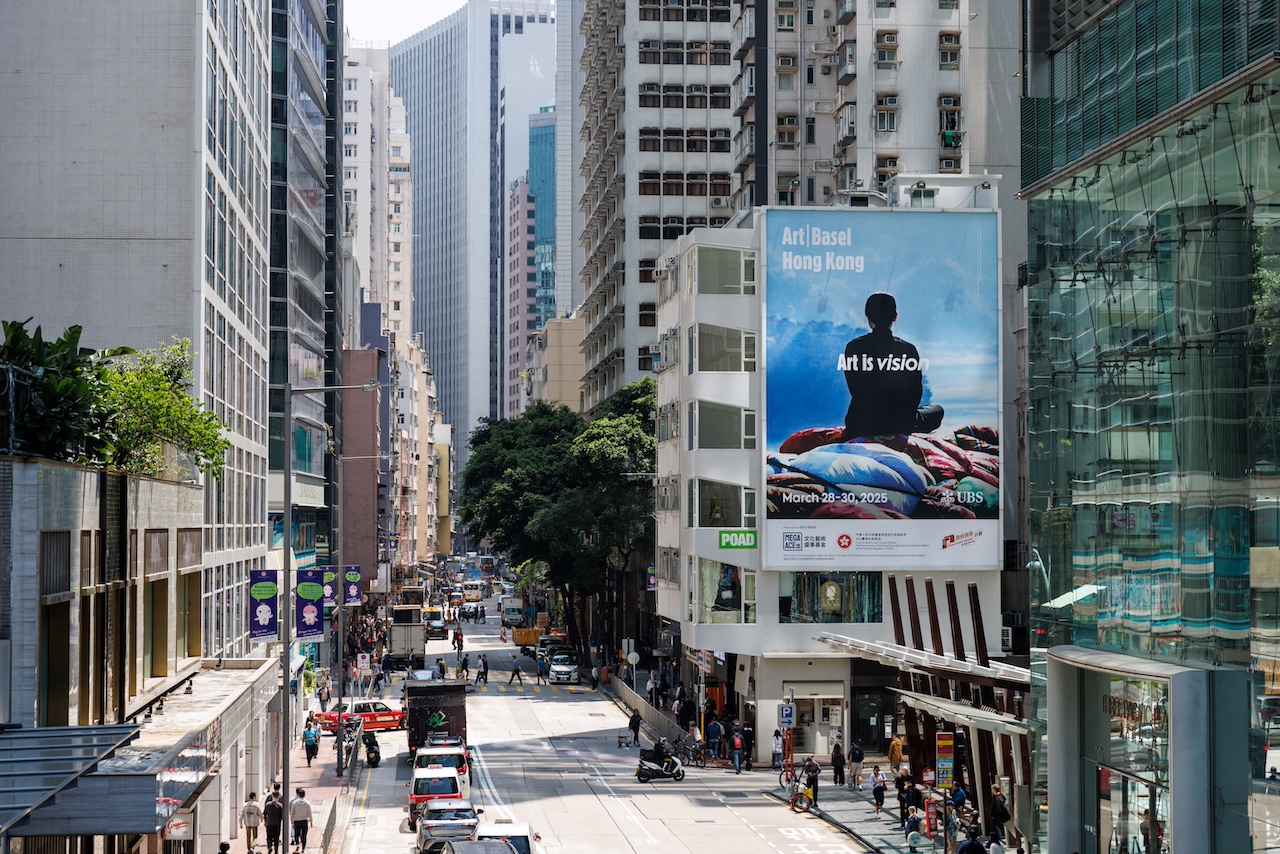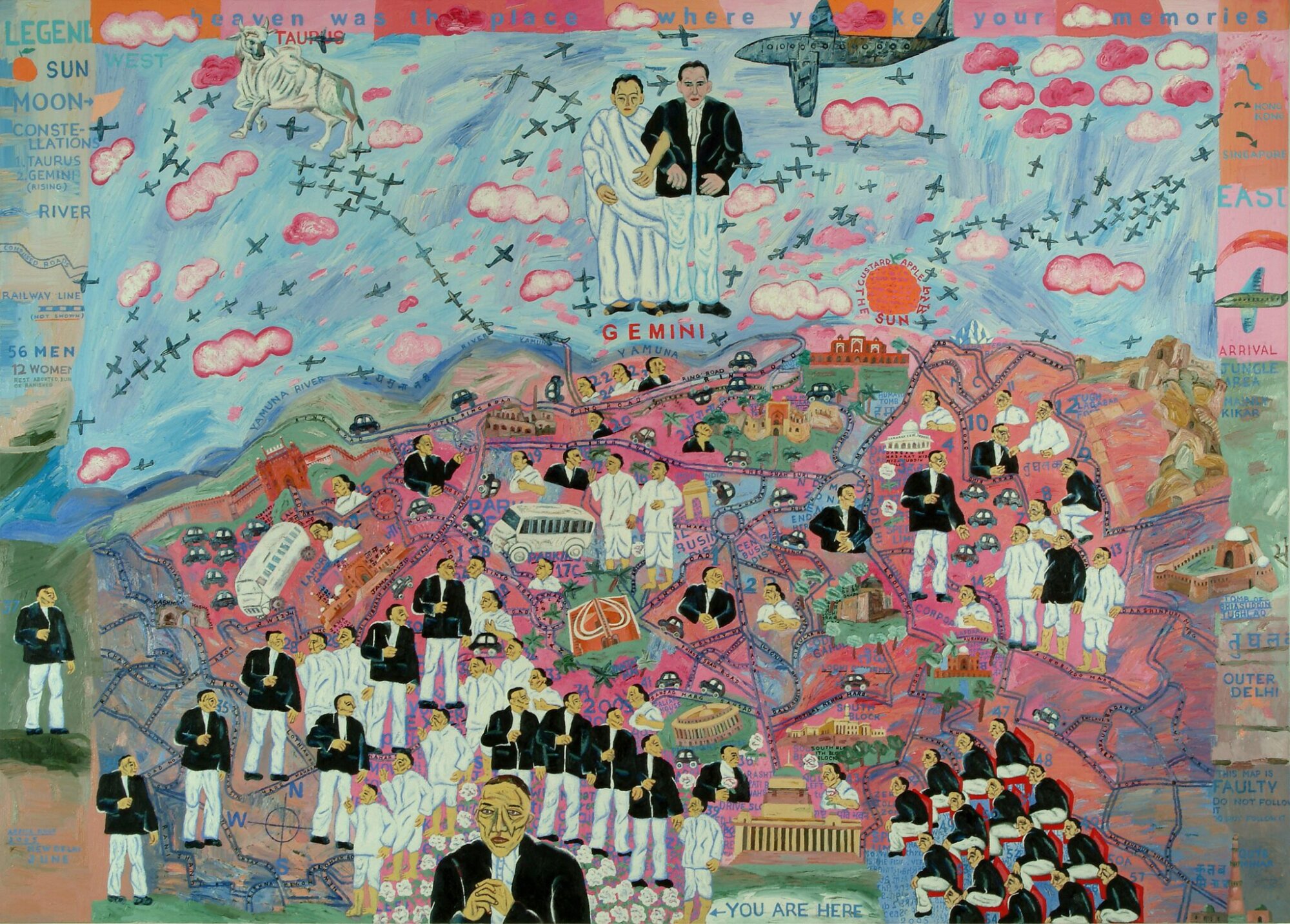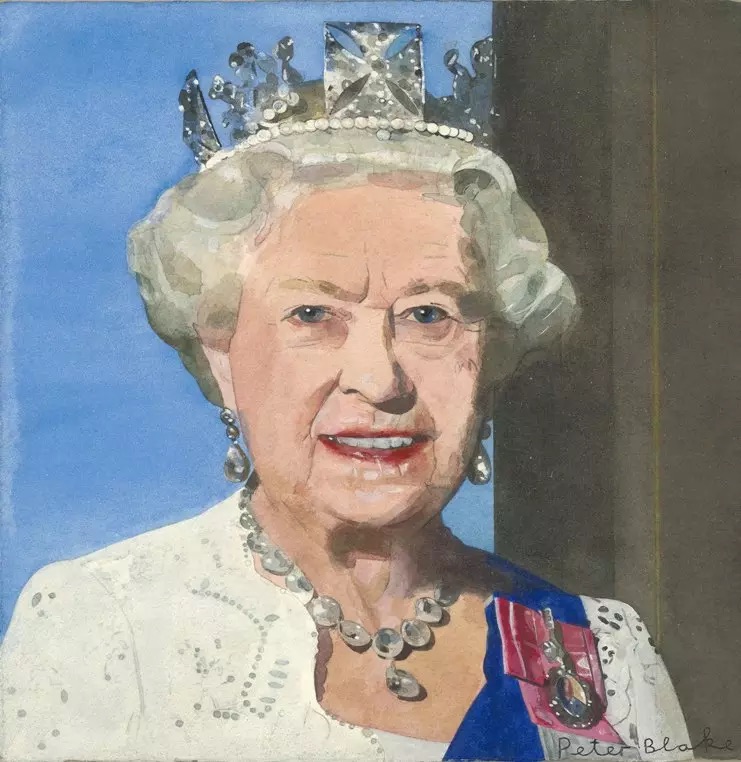

Monday Muse
Remembering Queen Elizabeth II
Tribute
Queen Elizabeth II
Image
Peter Blake, Portrait of Queen Elizabeth (Radio Times Diamond Jubilee Royal Souvenir Cover), 2012. Waddington Custot.
Tribute
Queen Elizabeth II
Image
Peter Blake, Portrait of Queen Elizabeth (Radio Times Diamond Jubilee Royal Souvenir Cover), 2012. Waddington Custot.
As the world mourns the loss of Queen Elizabeth II, we’ve dedicated this week’s Monday Muse to the second-longest reigning monarch in history.
Epitomising quiet leadership, consistency and loyalty, Queen Elizabeth II contributed enormously to national and international social, political and cultural efforts during her 70-year reign from 1953 – 2022. A dedicated patron for more than 40 arts and cultural institutions, she was always at the forefront of theatre, film, dance, music and art.
Most importantly, she acted as an ambassador and custodian of the largest private art collection in the world – The Royal Collection – which she took over at the young age of 25. Formed after the monarchy’s restoration in 1660, the Collection is housed across the UK’s royal palaces. It includes around one million artworks and more than 20,000 paintings and drawings, as well as rare drawings by Leonardo da Vinci, acquired by Charles II and George III. Objects of great historical significance include furniture such as a jewel cabinet by William Vile, which was the single most costly piece of furniture Vile made for King George III; porcelain including the Mecklenburg Service; books; manuscripts, arms; and more recent additions from the world of photography. The Old Masters feature prominently too, with works by Raphael and Titian, and a painting by Rembrandt, “The Shipbuilder and His Wife Jan Ricksen and His Wife Griet Jans”, which was widely acknowledged as The Queen’s favourite in the Collection.
The Royal Collection’s current exhibition, titled Platinum Jubilee: The Queen’s Accession, is open until Sunday, 2 October. It showcases portraits of the young, newly crowned Queen that were taken just a few weeks after she ascended the throne in 1952.
As well as opening the Commonwealth Institute, The Sainsbury Wing of The National Gallery and the National Theatre, all of which are regarded as cornerstones of the British cultural landscape, Queen Elizabeth II was a performer herself. Described as “a Marina Abramović for the ages” by The Art Newspaper, she transformed through her use of fashion and broadcast media, entering the homes of millions through her unparalleled television broadcasts.
As one of the most sought-after sitters for portraitists, she also officially sat for around 200 portraits during her reign. Unlike any monarch before her, Her Majesty allowed herself to be painted in increasingly casual settings for a diverse list of artists, helping to cement her position as a cultural icon.
To reflect on the life and legacy of Queen Elizabeth II, we’ve picked some of our favourite depictions of the late Queen from Lucian’s Freud’s portrait painting to Warhol’s pop art piece and Chris Levine’s mediative “Lightness of Being”.
Epitomising quiet leadership, consistency and loyalty, Queen Elizabeth II contributed enormously to national and international social, political and cultural efforts during her 70-year reign from 1953 – 2022. A dedicated patron for more than 40 arts and cultural institutions, she was always at the forefront of theatre, film, dance, music and art.
Most importantly, she acted as an ambassador and custodian of the largest private art collection in the world – The Royal Collection – which she took over at the young age of 25. Formed after the monarchy’s restoration in 1660, the Collection is housed across the UK’s royal palaces. It includes around one million artworks and more than 20,000 paintings and drawings, as well as rare drawings by Leonardo da Vinci, acquired by Charles II and George III. Objects of great historical significance include furniture such as a jewel cabinet by William Vile, which was the single most costly piece of furniture Vile made for King George III; porcelain including the Mecklenburg Service; books; manuscripts, arms; and more recent additions from the world of photography. The Old Masters feature prominently too, with works by Raphael and Titian, and a painting by Rembrandt, “The Shipbuilder and His Wife Jan Ricksen and His Wife Griet Jans”, which was widely acknowledged as The Queen’s favourite in the Collection.
The Royal Collection’s current exhibition, titled Platinum Jubilee: The Queen’s Accession, is open until Sunday, 2 October. It showcases portraits of the young, newly crowned Queen that were taken just a few weeks after she ascended the throne in 1952.
As well as opening the Commonwealth Institute, The Sainsbury Wing of The National Gallery and the National Theatre, all of which are regarded as cornerstones of the British cultural landscape, Queen Elizabeth II was a performer herself. Described as “a Marina Abramović for the ages” by The Art Newspaper, she transformed through her use of fashion and broadcast media, entering the homes of millions through her unparalleled television broadcasts.
As one of the most sought-after sitters for portraitists, she also officially sat for around 200 portraits during her reign. Unlike any monarch before her, Her Majesty allowed herself to be painted in increasingly casual settings for a diverse list of artists, helping to cement her position as a cultural icon.
To reflect on the life and legacy of Queen Elizabeth II, we’ve picked some of our favourite depictions of the late Queen from Lucian’s Freud’s portrait painting to Warhol’s pop art piece and Chris Levine’s mediative “Lightness of Being”.
“But let us not take ourselves too seriously…None of us has a monopoly of wisdom and we must always be ready to listen and respect other points of view.”
Queen Elizabeth II, Christmas Broadcast, 1991
